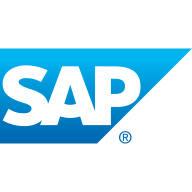

SAP Replication Server and SnapLogic are competing in data management and integration. SnapLogic leads with its modern features and cloud integration capabilities, offering faster returns on investment despite higher pricing.
Features: SAP Replication Server offers real-time replication, cross-database support, and high reliability under heavy loads. SnapLogic provides versatile API and cloud integrations, a low-code environment for ease of use, and rapid deployment for business agility.
Room for Improvement: SAP Replication Server could benefit from enhanced cloud support, simplified configuration processes, and broader API integrations. SnapLogic might improve by offering more competitive pricing, scaling its customer support, and expanding integration options for niche systems.
Ease of Deployment and Customer Service: SAP Replication Server requires detailed setup and IT expertise, though it offers comprehensive support. SnapLogic excels in swift deployments with user-friendly interfaces and responsive customer service, catering to faster project setups.
Pricing and ROI: SAP Replication Server has high upfront costs with a longer ROI, focusing on stable deployments. SnapLogic, despite a premium price, facilitates quicker returns due to flexible integrations and reduced deployment time.


Information and data-driven insight is what powers business today. But to get the most from your enterprise data, you need a way to bring transactional, streaming, social media, and other data together – regardless of its format and whether it’s structured or unstructured – and be able to analyze it. The challenge is moving, replicating, and centralizing a wide variety of data efficiently, cost-effectively, and quickly enough to meet business demands for active insight. SAP® Replication Server® can help. SAP Replication Server enables the continuous movement of mission-critical application data.
The SnapLogic Intelligent Integration Platform uses AI-powered workflows to automate all stages of IT integration projects – design, development, deployment, and maintenance – whether on-premises, in the cloud, or in hybrid environments. The platform’s easy-to-use, self-service interface enables both expert and citizen integrators to manage all application integration, data integration, API management, B2B integration, and data engineering projects on a single, scalable platform. With SnapLogic, organizations can connect all of their enterprise systems quickly and easily to automate business processes, accelerate analytics, and drive transformation.
We monitor all Data Integration reviews to prevent fraudulent reviews and keep review quality high. We do not post reviews by company employees or direct competitors. We validate each review for authenticity via cross-reference with LinkedIn, and personal follow-up with the reviewer when necessary.